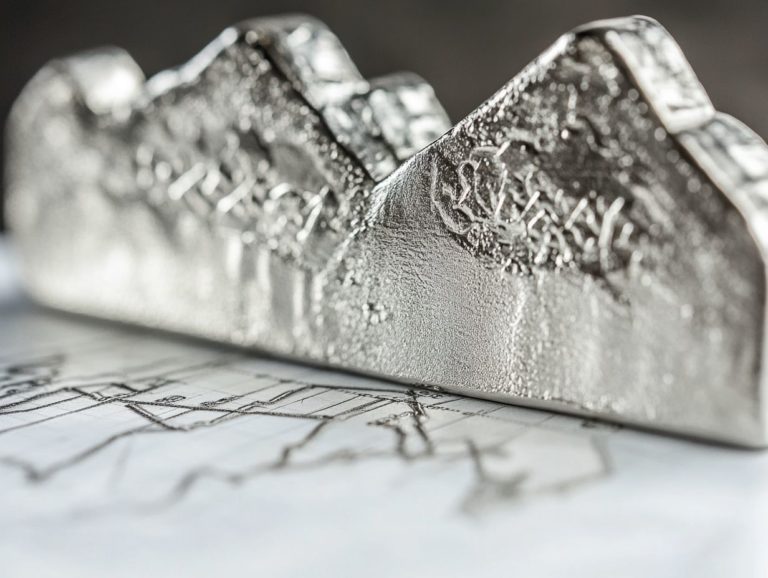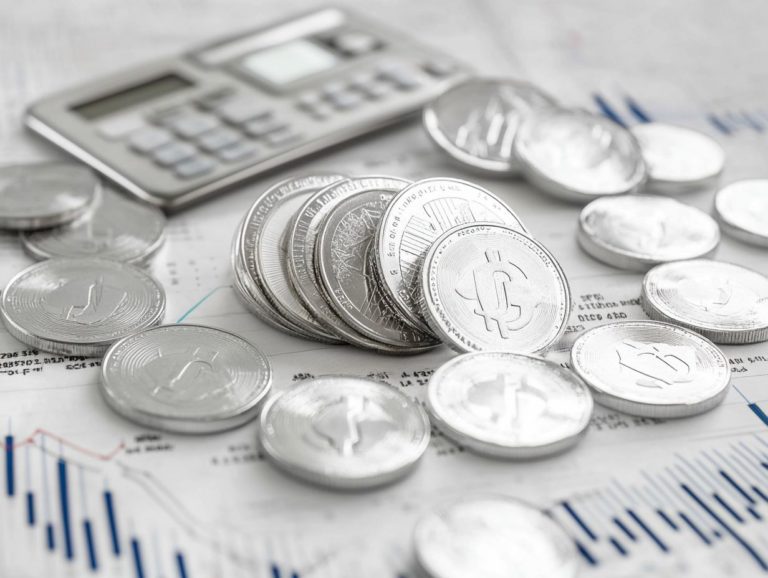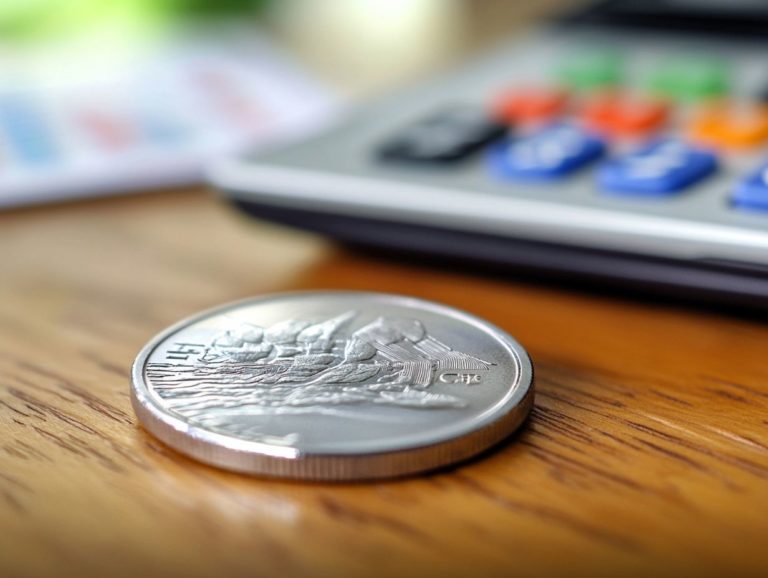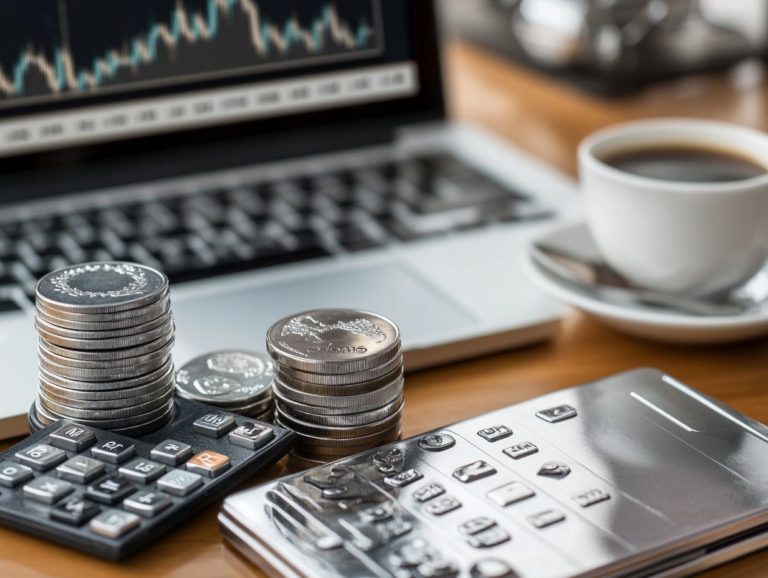5 Silver Investment Myths Debunked
Investing in silver can often be shrouded in misconceptions that may deter or mislead you as a potential investor.
You might encounter beliefs about its value relative to gold or concerns regarding market volatility, which can understandably make you hesitant. This article aims to address five common myths surrounding silver investment, shedding light on its true worth and potential.
You’ll discover what silver investing truly entails, explore its various forms, and understand the market factors at play, all while navigating the intricacies of this precious metal. Join us in debunking these myths and uncovering the realities of investing in silver.
Contents
- Key Takeaways:
- 1. Silver Is Not a Good Investment
- 2. Silver Is Only Valuable as Jewelry
- 3. The Market for Silver Is Too Volatile
- 4. Silver Is Not as Valuable as Gold
- 5. Silver Is Difficult to Sell
- What Is Silver Investing and How Does It Work?
- What Are the Different Ways to Invest in Silver?
- What Factors Affect the Price of Silver?
- How Can One Determine the Value of Their Silver Investments?
- What Are the Advantages of Investing in Silver?
- What Are the Risks Involved in Silver Investing?
- How Can One Protect Their Silver Investments?
- What Are the Trends in the Silver Market?
- What Are the Common Misconceptions About Silver Investing?
- How Can One Get Started with Silver Investing?
- Frequently Asked Questions
Key Takeaways:
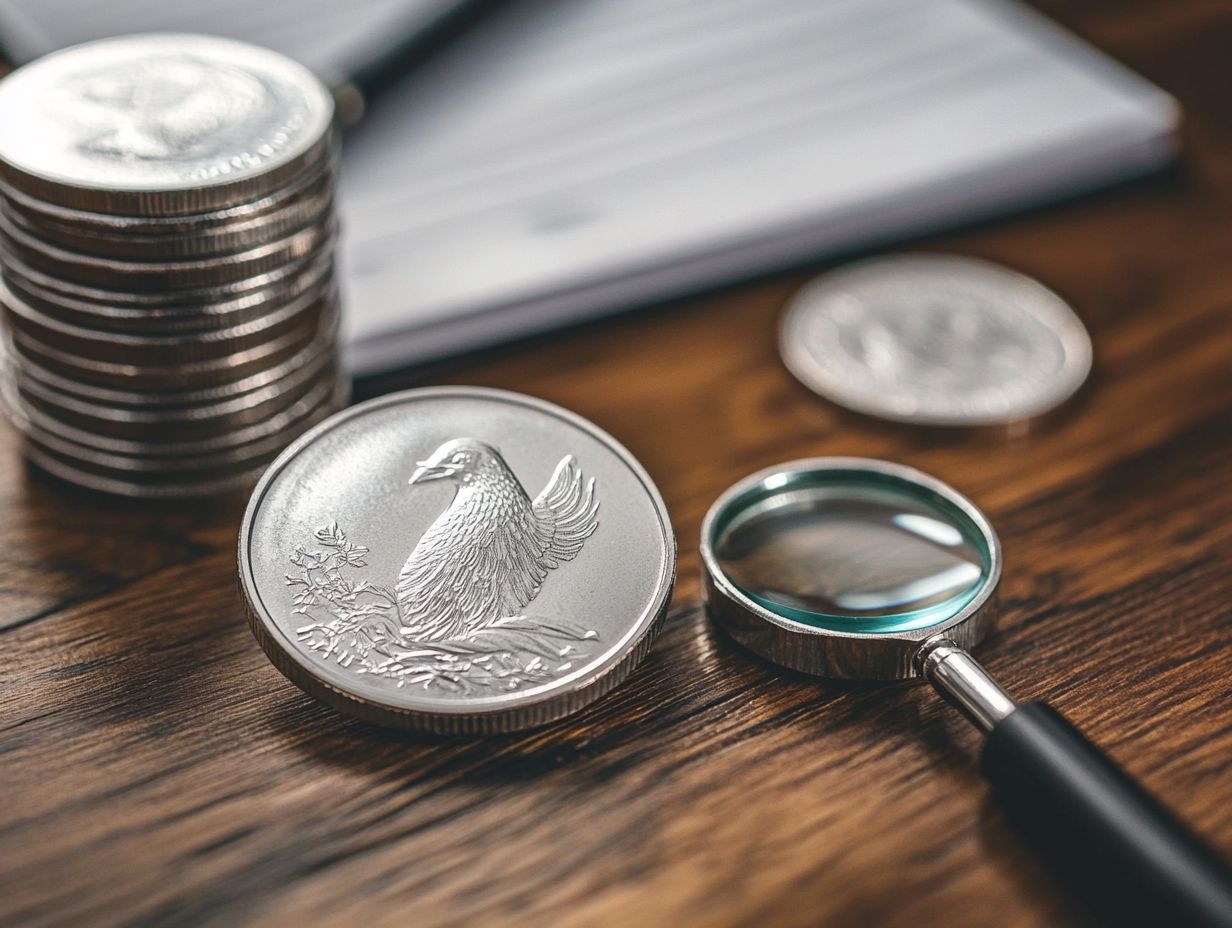
- Don’t miss out on how silver is a valuable investment option that should not be underestimated or dismissed easily.
- Act now to explore how silver has many practical uses beyond jewelry and can be a profitable investment when approached strategically.
- While the silver market may experience fluctuations, it can also provide opportunities for investors to make gains.
1. Silver Is Not a Good Investment
In the world of precious metals investment, silver often plays second fiddle to its illustrious counterpart, gold. This is especially true when it comes to building wealth and financial strategy amid market volatility and economic uncertainties.
Many investors tend to overlook silver due to its perceived risks and the challenges brought on by price fluctuations. This understandably fuels skepticism about its long-term viability as an investment option.
Consider the tumultuous period of the 2008 financial crisis. While gold prices surged, solidifying its reputation as a ‘safe haven,’ silver’s performance noticeably lagged. In late 2022, gold was valued at approximately $1,800 per ounce, while silver hovered around $24, illustrating a substantial gap in value retention.
Financial advisors frequently recommend gold over silver. They point out that silver can be more susceptible to changes in market prices and industrial demand fluctuations. Analysts often voice concerns regarding silver’s liquidity, meaning how easily you can buy or sell it, and volatility, emphasizing that you should approach it with caution if you’re considering diversifying your investment portfolio.
2. Silver Is Only Valuable as Jewelry
While silver is widely known for its industrial applications and its presence in the jewelry market, its true value reaches far beyond mere adornment. Many consumers tend to view silver primarily through the lens of fashion.
This narrow perspective can be limiting. Silver has a vital role in industries like electronics. Its remarkable conductivity makes it critical in devices ranging from smartphones to computers. Moreover, silver is increasingly finding its way into solar panels, playing a significant part in the renewable energy revolution.
This dual identity serving as both an essential industrial metal and a stunning choice for jewelry creates a fascinating dynamic in consumer demand. Investors who appreciate silver’s industrial importance are likely to adopt a more nuanced approach. They recognize that its value can shift in response to technological innovations and global economic trends.
3. The Market for Silver Is Too Volatile
The silver market is notoriously volatile, presenting a challenging investment choice for anyone seeking stable returns amidst economic uncertainty. This complexity makes it an exciting option for investors considering diversifying their portfolios with precious metals.
This volatility arises from a variety of factors, such as fluctuating global economic conditions, shifts in industrial demand, and the delicate balance of supply dynamics. Unlike gold, which many view as a safe haven during turbulent times, silver s prices can swing dramatically based on its industrial applications.
For example, recent market fluctuations saw silver prices dip significantly amid fears of an economic slowdown, only to rebound sharply with a surge in demand for solar panels. As you navigate the complexities of precious metal markets, you’re likely to find yourself weighing these unpredictable movements against more stable investments.
4. Silver Is Not as Valuable as Gold
In the realm of precious metals, gold consistently outshines silver when it comes to perceived value, investment performance, and historical significance. It s often seen as the gold standard pun intended for wealth preservation and a safeguard against inflation.
Several factors contribute to this distinction, including market trends and the specific scarcity of these metals. Over time, gold has shown extraordinary resilience during economic downturns, often experiencing a significant price increase when uncertainty hangs in the air. For example, during financial crises, both metals may capture increased interest, but gold often takes the spotlight due to its rich history as a dependable currency and a universal hedge against economic turmoil.
Investors frequently view gold as a sanctuary of safety, especially when considering past instances where its prices surged dramatically compared to silver. This consistent preference highlights why many financially savvy individuals lean toward gold as a primary asset in their portfolios. Even with the tempting allure of silver s affordability and industrial utility, gold remains the preferred choice.
5. Silver Is Difficult to Sell
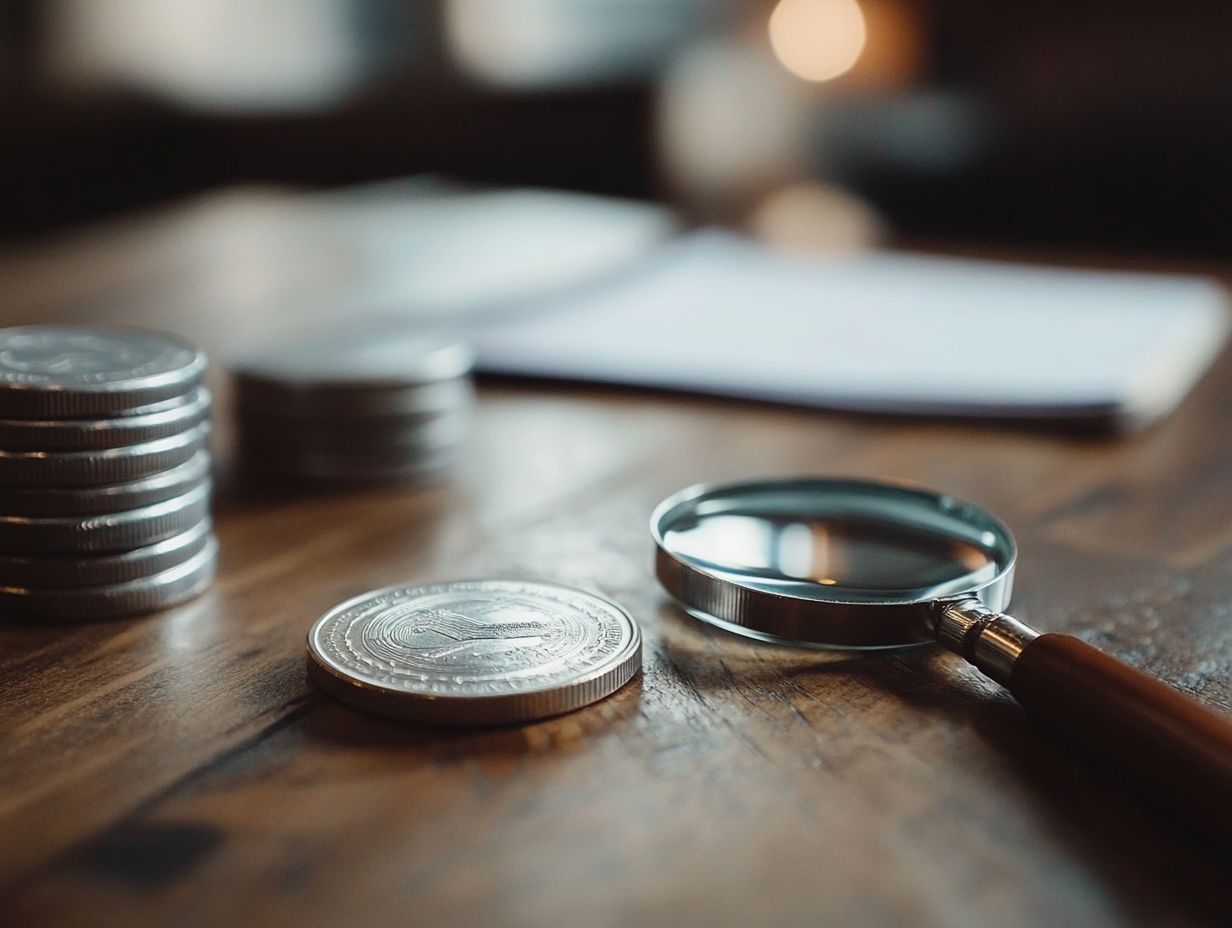
Liquidating silver investments can be quite the challenge, as the process often entails finding a reputable dealer and navigating the intricacies of market transactions. Such complexities might hold you back from entering the silver market altogether.
Concerns about securing a fair price often arise, especially given the volatility of silver prices. The limited availability of local coin shops and pawnshops that specialize in precious metals adds to the difficulties of selling. You might feel confused about where to sell your silver, which can undermine your confidence in the market.
When these venues fail to offer competitive buyback rates, it can diminish your perception of silver as a liquid asset, ultimately affecting broader market participation and stifling investor enthusiasm.
What Is Silver Investing and How Does It Work?
Silver investing offers a sophisticated array of strategies and approaches that allow you to seamlessly integrate this precious metal into your portfolio. It functions not only as a hedge against inflation but also serves as a means of diversifying your assets that you can quickly sell.
This type of investment can manifest in various tangible forms, such as physical coins, bars, and even exchange-traded funds (ETFs) that mirror silver prices. By incorporating these assets into your financial strategy, you can enhance your portfolio’s resilience against market volatility while enjoying the liquidity and convenience inherent in precious metals.
Unlike many other capital investments, silver provides a unique combination of immediate accessibility and long-term value. This makes it an appealing choice for those seeking to balance risk while capitalizing on evolving market trends.
What Are the Different Ways to Invest in Silver?
You have a range of enticing options for investing in silver, from physical assets like coins and bullion to financial instruments designed for market exposure. This variety allows you to tailor your approach to fit your unique investment goals and risk profile.
If you lean towards physical assets, silver coins can be a captivating choice, offering both tangibility and historical significance. Just keep in mind, they often come with higher premiums. In contrast, bullion bars present a more cost-effective way to acquire silver, although they might lack the same aesthetic allure as coins.
For those who prioritize liquidity, exchange-traded funds (ETFs) can be an excellent option, granting you market exposure without the hassle of storage. However, be aware that they can carry management fees.
Financial advisors often suggest evaluating your risk tolerance and investment horizon when selecting your path. This ensures your chosen method aligns perfectly with your financial objectives while staying mindful of potential market fluctuations.
What Factors Affect the Price of Silver?
The price of silver is swayed by a multitude of factors, including market demand and supply dynamics, economic downturns, and investor sentiment all of which contribute to its ever-changing value in the precious metals market.
Industrial demand plays a pivotal role, especially in sectors like electronics and solar energy. Here, silver’s unique properties are highly valued.
Geopolitical events, such as trade tensions or conflicts in key mining regions, can disrupt supply chains, adding another layer of unpredictability to the mix.
Market predictions based on economic indicators often influence investor behavior. This can lead to sudden spikes or drops in silver pricing. These interconnected elements create a complex web that shapes price volatility.
It’s essential to stay attuned to global developments for more knowledge-based decision-making.
How Can One Determine the Value of Their Silver Investments?
Determining the value of your silver investments requires a thorough understanding of current market prices, appraisal techniques, and the overall condition of the silver assets you hold. These factors can vary significantly based on the quality and form of the silver.
Start by consistently tracking market prices, leveraging online resources and financial news to stay informed about price fluctuations. Obtaining appraisals from reputable dealers will give you a reliable assessment of your silver’s worth.
Key factors such as purity the quality of the silver and rarity can substantially affect market value. For example, limited-edition coins or antique silverware might carry additional worth beyond just their metal content.
This makes thorough research essential for anyone looking to maximize their silver investments.
What Are the Advantages of Investing in Silver?
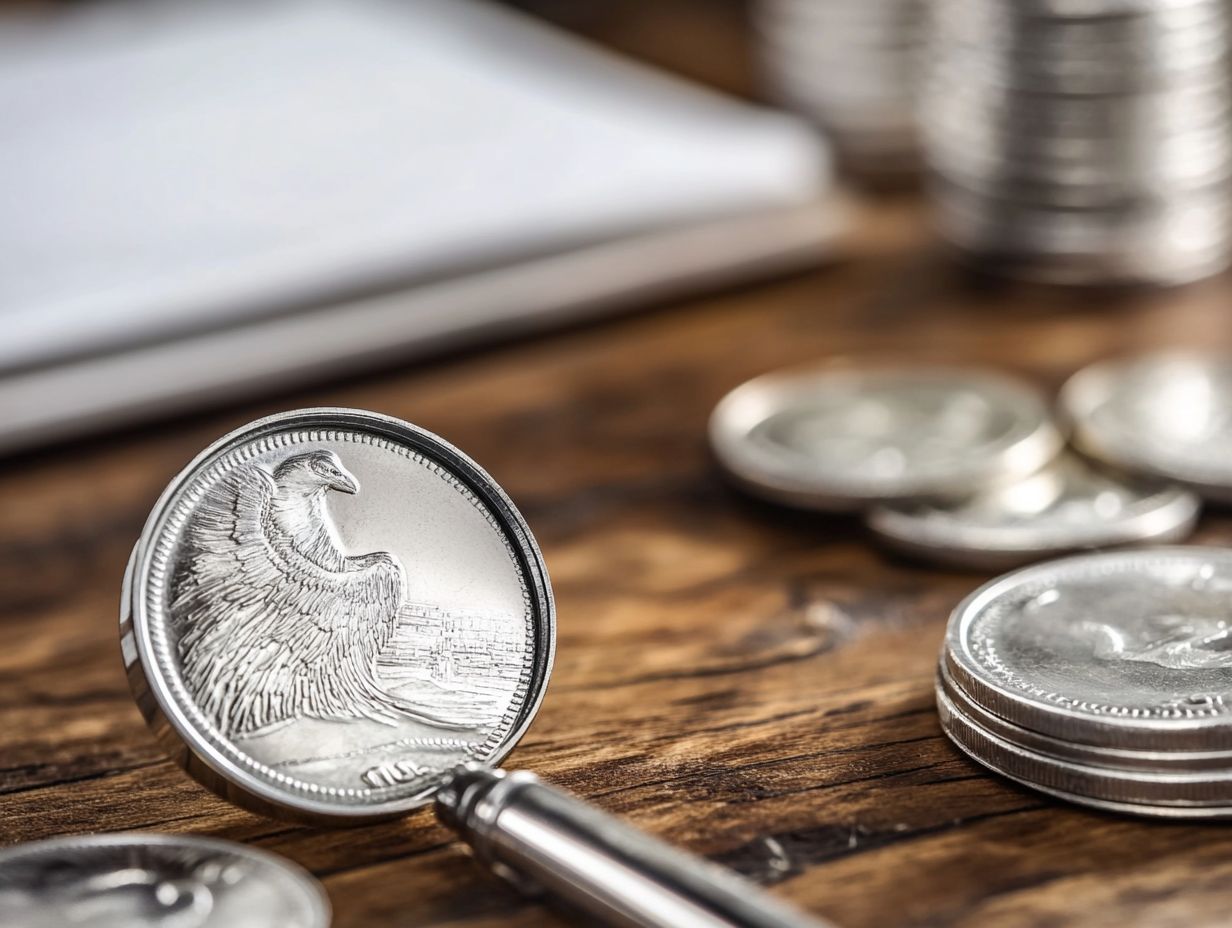
Investing in silver opens doors to exciting opportunities! Here are some key advantages:
- Acts as a hedge against inflation
- Potential for long-term returns
- Opportunity to diversify your investment portfolio
This remarkable metal has a track record of resilience during economic downturns, often maintaining or even increasing its value when traditional markets stumble.
In times of financial instability, silver tends to draw in investors seeking stability, enhancing its reputation as a safe haven.
When integrated with other assets like stocks and bonds, silver can help you mitigate risk. This creates a balanced approach to wealth preservation.
By considering these factors, you can craft a more robust financial strategy that harmonizes growth with security.
What Are the Risks Involved in Silver Investing?
The risks inherent in silver investing include:
- Market volatility
- Potential for depreciation
- Challenges in liquidation
Fluctuations in supply and demand, driven by various economic factors and geopolitical events, can lead to unpredictable pricing scenarios.
It’s important to account for the costs associated with storage and insurance, which can chip away at your profits over time.
Long-term planning necessitates a meticulous evaluation of your risk tolerance and a strategy that accommodates potential market shifts.
Consider the liquidity of silver compared to other assets. The ease with which you can convert it into cash can directly influence your financial goals and obligations.
Stay informed and make your silver investments wisely to secure your financial future.
How Can One Protect Their Silver Investments?
Protecting your silver investments is crucial. With the right strategies, you can safeguard your wealth and stay ahead of market changes!
One effective strategy is spreading your money across different types of investments. This means investing in various assets to reduce the risk of losing money from a single market downturn. By including commodities, stocks, and bonds, you can cushion potential losses that may arise from falling silver prices.
Staying informed about market trends is essential for making timely decisions, whether it’s buying during dips or selling at the right moment. Working with financial advisors can improve your risk management strategies. These professionals offer personalized insights that align with your unique situation, making it easier to navigate the complexities of investing.
What Are the Trends in the Silver Market?
Understanding current trends in the silver market is essential for informed investing. The landscape is constantly changing due to shifts in demand, industrial uses, and global economic factors.
Recently, increased industrial demand especially from renewable energy and electronics has sparked significant interest in silver. Advances in technology that improve silver extraction and processing are also affecting supply, which influences overall market stability.
On a broader scale, geopolitical tensions significantly affect silver prices, as trade policies and international relations create volatility.
By staying aware of these trends, you can better anticipate future price changes and discover promising opportunities in this ever-evolving market.
What Are the Common Misconceptions About Silver Investing?
Many investors hold onto misconceptions about silver investing, which can result in misguided strategies and missed opportunities.
These misunderstandings often stem from comparing silver to gold, with silver perceived as a lesser option. Some believe that because silver is cheaper per ounce, it lacks potential for substantial returns. They fail to recognize its unique characteristics and historical stability, often influenced by top gold investment myths.
By addressing these myths, you can gain a clearer perspective on silver’s role in a diversified portfolio. Understanding that silver not only serves as a hedge against inflation but also has strong industrial demand empowers you to develop strategies that maximize your potential gains. To further enhance your knowledge, check out common myths about gold investment.
How Can One Get Started with Silver Investing?
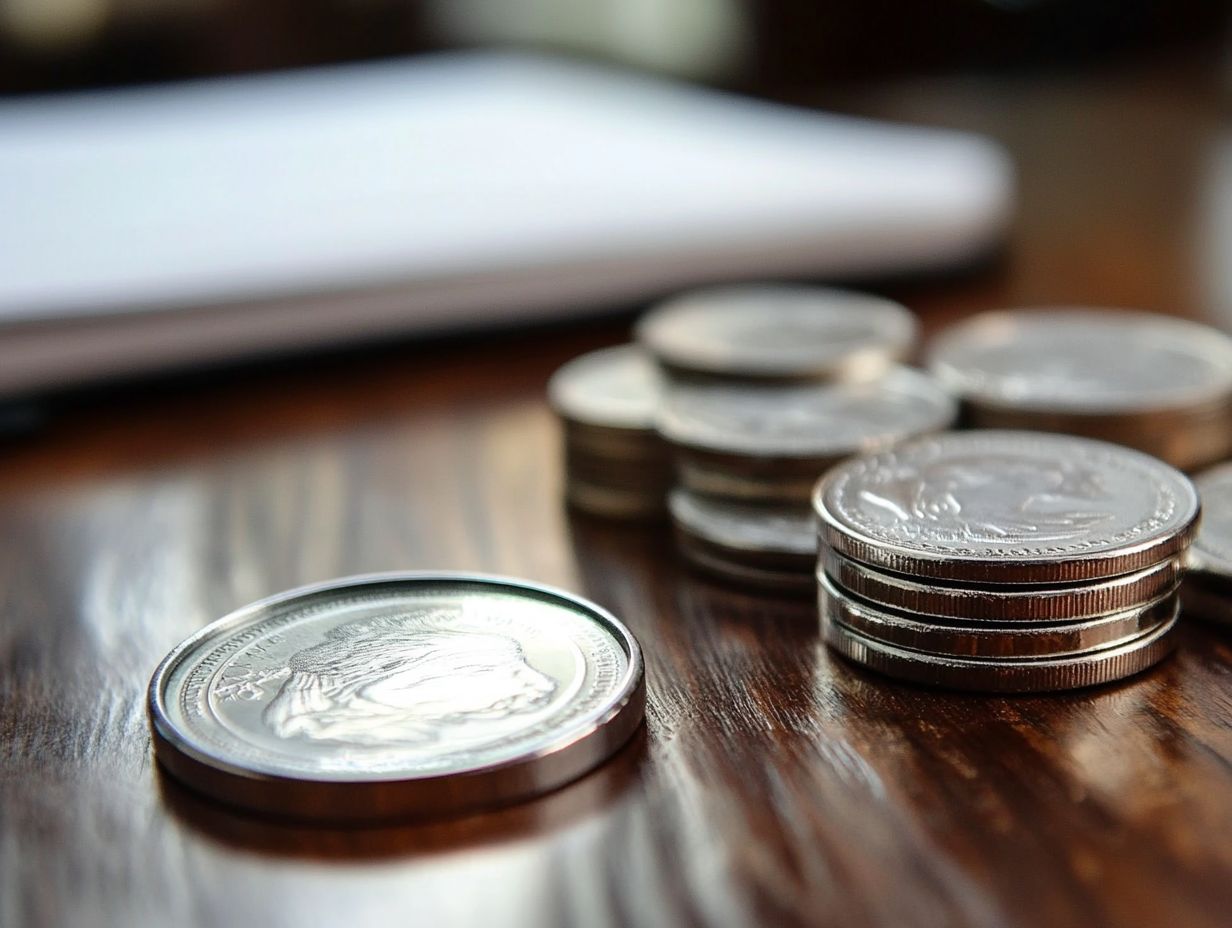
Getting started with silver investing involves learning about different investment strategies, market dynamics, and essential steps to enter the precious metals market. This process is accessible, even for beginners!
Begin by understanding the fundamentals of silver, such as its historical performance and current demand across various industries. Familiarize yourself with recent market trends, track price changes, and learn about the geopolitical factors that can influence silver prices.
Research reputable dealers to ensure you re purchasing authentic products and getting true value for your investment. Evaluate different investment types like bullion bars, coins, and silver ETFs (funds that invest in silver assets instead of physical silver) to make informed decisions that match your financial goals and risk tolerance.
Frequently Asked Questions
What are the top 5 silver investment myths?
The top 5 silver investment myths are: 1) Silver is a risky investment, 2) Silver is just a poor man’s gold, 3) Silver is not a versatile metal, 4) Silver is not valuable, and 5) Silver is not a stable investment option.
Is silver a risky investment?
No, silver is not a risky investment. Like any investment, there is some risk involved, but silver has proven to be a stable option over the years.
Is silver just a poor man’s gold?
No, silver is not just a poor man’s gold. While gold may be regarded as a more prestigious metal, silver has its own valuable properties and uses that make it a worthwhile investment.
Is silver not a versatile metal?
Silver is a highly versatile metal. It has many industrial and technological uses.
Is silver not valuable?
Silver has been used as currency for centuries. Today, it remains a valuable asset and a reliable investment.
Is silver not a stable investment option?
Silver is a stable investment, with less fluctuation than stocks or cryptocurrencies. It is a safe-haven asset during economic uncertainty.










